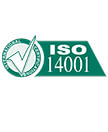IBM’s massive recycling facilities are more like rehabilitation centers. Most of the computers, printers, and servers—castoffs from IBM’s offices, along with equipment previously leased to corporate customers—are refurbished and resold. Some are salvaged for parts.
But inevitably some electronics are too old to resuscitate. Therein lies one of the biggest conundrums of the digital age: How to properly dispose of e-waste, which contains toxic materials such as lead, mercury, and cadmium. “It’s easy to buy something, but it’s hard to get rid of it,” says Richard Dicks, general manager for the IBM (IBM) division that handles the triage.
Americans get rid of 47.4 million computers, 27.2 million televisions, and 141 million mobile devices annually, according to the latest figures from the Environmental Protection Agency. Only a quarter of all those devices are collected for recycling.
Many states have passed laws that dictate how to dispose of electronics. Most prohibit dumping them in landfills and require tha犀利士
t they be recycled. California’s laws, for example, are among the most stringent. Anyone buying a monitor in the state pays a recycling fee that funds e-waste disposal.
Choosing a recycler isn’t as easy as it may seem. There are many options, such as free electronics collection sites, haulers that send trucks to pick up computers, and manufacturer take-back programs. But their environmental rigor varies. Horror stories of U.S. electronics shipped to developing nations and improperly stripped of valuable metals are common.
In China, Ghana, and India, some recyclers do little to prevent the release of toxics materials. Workers use acid to etch metals from circuit boards, polluting the environment with heavy metals, and burn the plastic covering off of wires to get at the copper underneath.
One way to find a responsible recycler is to check whether it is certified. The EPA endorses two standards programs, e-Stewards and R2, both of which require regular independent audits of participating recyclers to ensure they follow good practices. But there is some debate about the definition of good practices. E-Stewards prohibits recyclers from exporting electronics for processing, for example, while R2 allows it as long those facilities meet certain standards. “You can have a poor recycler in the U.S. just as easily as a really good recycler in China,” says Corey Dehmey, assistant to the executive director at R2 Solutions, the nonprofit that oversees the R2 standard.
Dell (DELL), the computer maker, along with other companies, has pushed for federal legislation that would ban the export of e-waste. Efforts to pass such bills in Congress have failed, however.
Companies should pay close attention to data security when tossing out their electronics. Corporate information does not simply disappear when a device is no longer needed. Busineses that allow consumer information to leak out face the risk of civil lawsuits. Health-care and financial companies operate under the extra burden of federal laws that prescribe stiff fines for failing to store and dispose of consumer data properly.
In general, large corporations do a good job of ensuring that their discarded electronics are properly disposed of, says Richard Fuller, president of the Blacksmith Institute, an environmental organization that focuses on industrial pollution. The big companies typically have the financial resources, employ a staff focused on sustainability issues, and recognize that being exposed as a careless polluter is bad for business. “It’s been really quite a shift in the corporate world to make sure that e-waste is correctly managed,” Fuller says.
Small and midsize businesses, however, are far more likely to fall short, he says. Many simply toss their old computers in the dumpster or hire irresponsible haulers to take them away.
Recyclers’ fees vary widely. Some charge nothing and recoup their costs entirely by reselling the scraps. But services that offer no-cost hauling may be more likely to cut corners. Expect to pay roughly $10 per item for a higher-end recycler, Fuller says.
Equipment that’s too old or broken to go back on the market is dismantled and harvested of parts and precious metals, such as gold, which is used in circuitry. The vast majority of the material is recycled. Less than 1 percent is incinerated or sent to a landfill, according to IBM.
Source: Verne Kopytoff, Bloomburg Businessweek, January 8th, 2013






